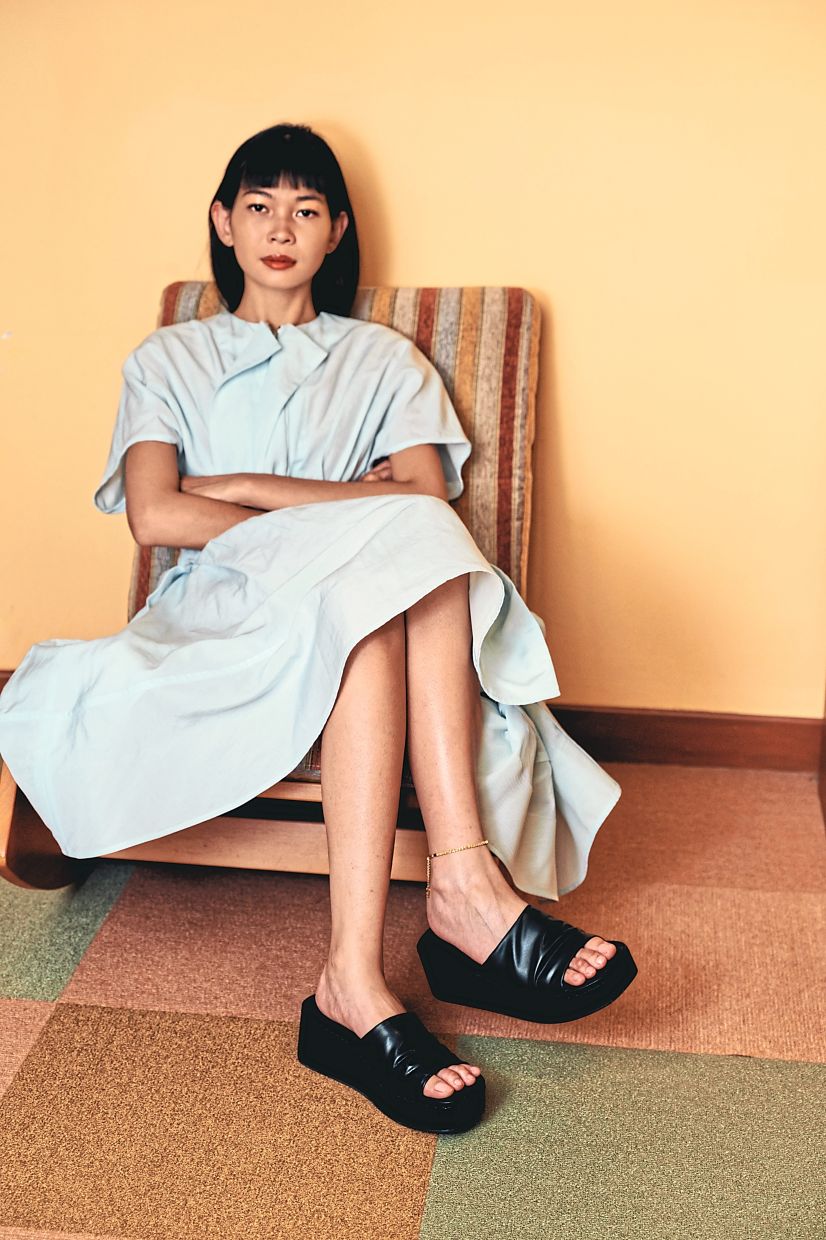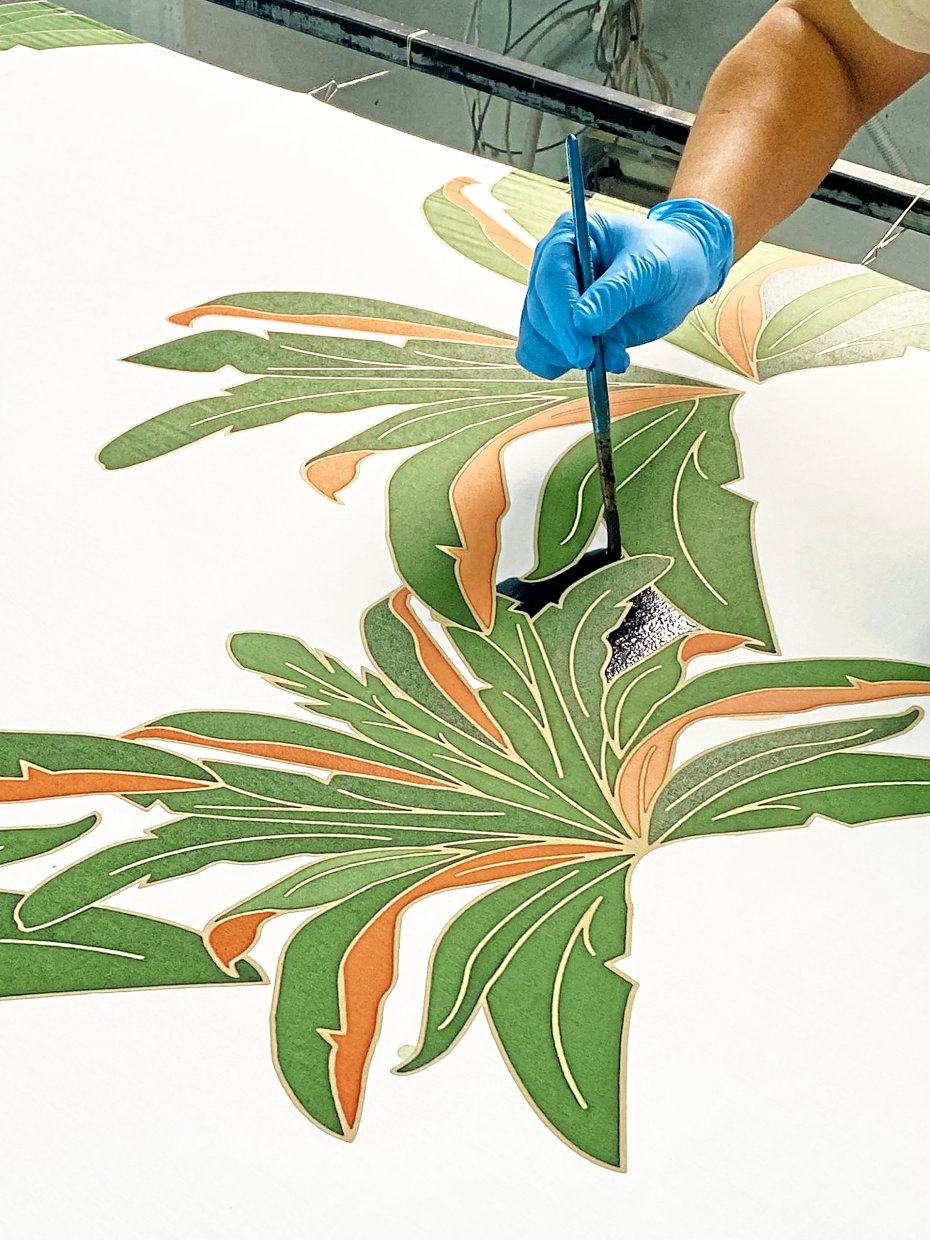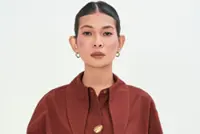Keeping their packaging minimal – no thank-you cards, no extra tags, no single-use disposables – is how the brand embraces the conscious fashion movement. Photo: Hanya
Terms such as sustainable, conscious, and mindful fashion boil down to a simple idea: making fashion meaningful rather than disposable.
Although today’s industry is driven by speed and excess, a conscious approach asks us to slow down – design for longevity, cut waste, choose responsible materials, and value the craft and fair work behind each piece.
Design with intention
Putting purpose at the centre of their brand’s DNA is the driving force behind several homegrown fashion brands’ design philosophies.
Nelissa Hilman, founder of her eponymous footwear brand, defines sustainable fashion as being intentional.
“It’s about slowing down to make choices that respect people, craft and the environment. It doesn’t always have to be loud or radical; sometimes it’s the quiet decisions we make every day that matter most,” says Nelissa.
At Nelissa Hilman, this ethos shapes how they design, produce and run the business – focusing on small-batch production to reduce excess and waste and working closely with local artisans and factories in Malaysia to support fair labour and to keep skills alive.
“In design, we’ve moved from PU materials to microfibres that are more durable. We also design with longevity in mind – shoes that aren’t driven by trends, but by comfort, versatility and timeless silhouettes. This means our customers can wear their pairs for years, not just for one season,” she says.
To Amy Blair, founder and CEO of the Batik Boutique, sustainable fashion is about designing in a way that respects both people and planet.
“It means considering the impact of every choice, from how materials are sourced to how artisans are treated and paid.
“We empower communities by providing skills training and fair work opportunities, especially for artisans from marginalised backgrounds,” she says.
The brand’s holistic approach involves working directly with artisans in Malaysia, providing marketable skills training and offering dignified work that provides long-term and sustainable income.
“Many of them are from B40 communities and we’re proud to see how this work empowers them and their families,” says Blair, whose brand uses natural fibres like cotton and silk.
Read more: 'Moving far too slow': Fashion labels lag behind on sustainability pledges
“Our batik is hand-drawn and hand-painted. We monitor production to reduce waste and repurpose fabric off-cuts into smaller products or packaging.”
Hanya co-founder and chief marketing officer Veen Dee Tan says being a conscious brand starts with a deep awareness of the waste we create and making mindful choices every day to reduce it.
“That means keeping our packaging minimal – no thank-you cards, no extra tags, no single-use disposables that end up in the bin the moment you open your parcel,” says Tan.
“It might not be an ‘Instagrammable’ unboxing and yes, we’ve received our fair share of criticism for it... but I truly believe that the first step to being conscious is to stop creating waste we don’t need.”
To Tan, being a conscious fashion brand also means choosing fabrics that last – like linen, cotton and Tencel.
“These are durable, timeless and designed for a longer wear life, so you can keep and love your pieces for years,” she adds.
For them, sustainability and ethics start with relationships, and they work closely with their factories, visiting them twice a year.
“We know the owners, their families and the workers who bring our designs to life. It’s about knowing and respecting the people behind our clothes. Because of that, we choose our suppliers carefully and tend to work with partners we’ve trusted for years.
“On the production side, we rely heavily on data and forecasting to ensure we only make what we can sell. This means producing moderately, never in the thousands per SKU (stock-keeping unit),” says Tan.
Creativity vs business goals
For conscious brands, the line between creativity and meeting their goals as a business is a constant balancing act.
Paying fair wages and ensuring production processes meet certain standards while also keeping the business afloat in an industry that constantly pushes endless consumption can be a challenge for brands.
How then do they stay afloat while also staying true to their design DNA?
“It is an ongoing process. Creativity is at the heart of what we do, but we also need to be grounded in business realities.
“The balance comes from being clear about our values – every design decision and material choice is guided by both creative vision and responsibility,” says Nelissa.
“Pricing is always a sensitive point, but we believe in honest pricing that reflects the craft, the materials and the people behind each shoe. Instead of producing more to sell more, we focus on designing better and offering styles that truly serve women’s lives,” she adds.
As a brand, Blair notes that they have learned that doing business consciously means growing more thoughtfully – not just quickly.
“Pricing is a constant conversation,” says Blair.
“We want our products to be accessible, while ensuring fair compensation for our artisans and responsible production methods.
“For example, each batik shirt we produce provides wages for 12 artisans. When customers understand what goes into each piece, they’re more willing to invest in quality over quantity,” she says.
Are Malaysians ready?
Local consumers are becoming increasingly aware and curious about sustainable fashion, questioning where their products come from, how they’re made and what values brands stand for.
Nelissa notes, however, that the biggest challenge is balancing affordability with sustainability.
Many still see “green” or “ethical” fashion as expensive, luxurious or inaccessible.
“Our role as local designers is to bridge that gap – to show that conscious fashion can also be approachable, practical and part of everyday life,” says Nelissa.
While Blair notes that growth in awareness is encouraging, especially among young consumers who want their purchases to align with their values, the reality is that fast fashion has conditioned many consumers to expect low prices and instant gratification.
In the case of batik designs, the availability of cheaper machine printed batik-like fabrics poses a challenge to this traditional skillset and the artisans that bring them to life.
“Competition is good and required for growth, and at the same time a lack of transparency and understanding of what batik actually is as a wax resist dye method affects the cultural heritage and artisans creating authentic batik,” says Blair.
“Our roles as a conscious brand is to help consumers understand the value behind what they’re buying: the craftsmanship, the fair wages, the local impact. Once they connect with that story, the mindset starts to shift,” she adds.
Read more: Can the fashion industry turn to technology to solve its massive waste problem?
Tan notes that Malaysia is very far behind on the sustainability spectrum.
“The biggest challenge is shifting people’s mindsets. I am not here to change the world but I can start with something I do best – and with what I built.
“While many consumers may be wanting to start shopping more consciously, they might not know what constitutes sustainability or how they can go about buying mindfully.”
“I would say: start small,” says Nelissa. “You don’t need to overhaul your wardrobe overnight. Begin by asking simple questions: Do I really need this? Who made it? Will I wear it often?”
Blair encourages consumers to start by choosing brands that are transparent about their practices.
“Support local businesses and social enterprises. Look for certifications like B Corp or Kuskop (Ministry of Entrepreneur Development and Cooperatives) social enterprise accreditation if you want assurance that a brand is walking the talk.
B Corp is a certification that recognises companies committed to transparency, sustainability and social impact, while the Kuskop accreditation reflects a brand’s commitment to inclusive, local economic development.
But even without the formal accreditations, if a brand is open about its process, values and people, Blair says it’s usually a good sign.
“Mindful fashion isn’t about being perfect. It’s about progress – choosing better and making decisions that reflect what matters to you,” says Blair.
Tan’s advice is to start small and buy pieces you’ll wear often, while also choosing durable fabrics, supporting small-batch brands and skipping impulse buys.
“Trust me when I say I have a very small wardrobe and rewear my outfits all the time. Buy less, love what you own more... and maybe discover a brand or two that’s trying to do the same,” says Tan.







